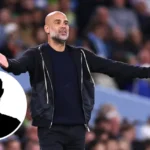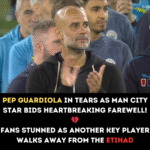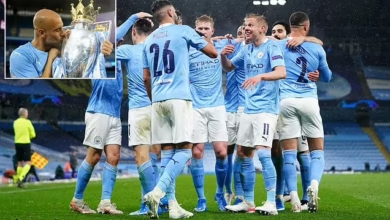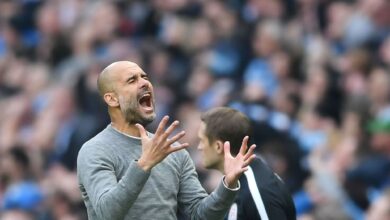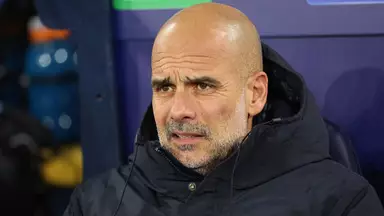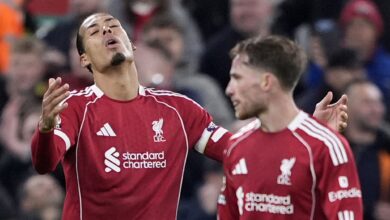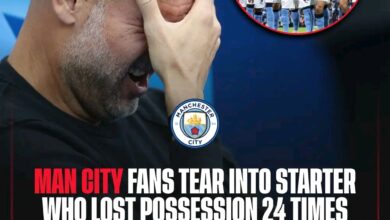No-one wants Jack Grealish! Man City could be forced to loan out £50m-rated outcast amid dearth of transfer options
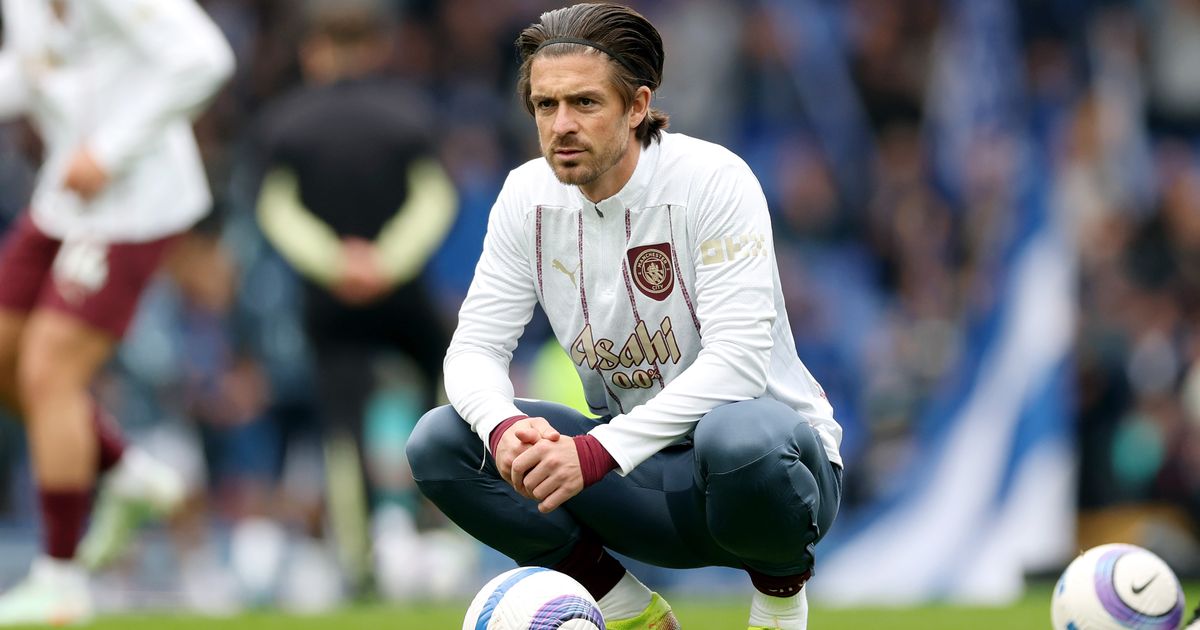
In the unforgiving world of modern football, few stories capture the brutal nature of the transfer market quite like Jack Grealish’s current predicament at Manchester City. The 28-year-old English international, who once commanded a British record transfer fee of £100 million when he moved from Aston Villa to the Etihad Stadium in 2021, now finds himself in an almost unprecedented situation: despite being valued at £50 million, no club appears willing to meet Manchester City’s asking price for his permanent transfer.
This remarkable turn of events has forced the Premier League champions to consider what would have seemed unthinkable just a few years ago – loaning out one of England’s most technically gifted players. The situation represents not just a personal crisis for Grealish, but a fascinating case study in how quickly fortunes can change in elite football, where astronomical transfer fees and wages can become as much of a burden as they are a blessing.
The Rise and Plateau of Jack Grealish
To understand the gravity of Grealish’s current situation, one must first appreciate the trajectory that brought him to this crossroads. When Pep Guardiola sanctioned the record-breaking move for the Villa captain in 2021, it represented the culmination of years of speculation and the recognition of a player who had single-handedly elevated Aston Villa from Championship mediocrity to Premier League respectability.
Grealish’s appeal was multifaceted. His ability to carry the ball at pace, draw fouls in dangerous areas, and create chances from seemingly impossible positions made him one of the most feared attacking players in English football. His performances for England at Euro 2020, where he provided crucial moments of inspiration despite limited starts, only enhanced his reputation as a game-changing talent.
However, the transition from being Aston Villa’s talisman to fitting into Guardiola’s intricate tactical system at Manchester City proved more challenging than many anticipated. While Grealish has undoubtedly contributed to City’s success, including their historic treble-winning campaign in 2022-23, he has never quite reached the individual heights that justified his record transfer fee.
The statistics tell a story of a player who has been effective but not exceptional in Sky Blue. His goal and assist returns, while respectable, have not matched the output expected of a £100 million player. More significantly, Guardiola’s tactical evolution and the emergence of other attacking options have gradually reduced Grealish’s importance to the team’s overall strategy.
The Financial Burden of Elite Football
Central to Grealish’s transfer predicament is the financial reality of modern football. His current contract, which runs until 2027, reportedly earns him £300,000 per week – a salary that places him among the highest-paid players in the Premier League. This eye-watering wage, combined with City’s £50 million valuation, creates a perfect storm of financial obstacles for potential suitors.
The mathematics are stark and unforgiving. Any club seeking to sign Grealish permanently would need to commit approximately £65-70 million over the remaining duration of his contract when combining transfer fee and wages. For most clubs, even those in the upper echelons of European football, such a commitment represents a significant portion of their annual budget and would require careful consideration of the return on investment.
This financial reality is compounded by the current economic climate in football. While revenues have continued to grow, many clubs are operating under increased scrutiny regarding Financial Fair Play regulations. The days of clubs making speculative big-money signings without clear sporting justification are largely behind us, replaced by a more analytical approach to player acquisition.
Manchester City’s Strategic Dilemma
From Manchester City’s perspective, the Grealish situation presents a complex strategic challenge. The club’s hierarchy, led by Director of Football Txiki Begiristain and supported by the ownership group, must balance several competing interests. On one hand, they have invested heavily in a player who, despite his contributions, has not delivered the transformative impact initially envisioned. On the other hand, they cannot afford to be seen as making poor transfer decisions, particularly given the scrutiny surrounding their financial operations.
The decision to exclude Grealish from the traveling squad for the Club World Cup campaign in the United States sends a clear message about his current status within the squad hierarchy. While club sources maintain that they are not actively pushing the player out, the absence from such a significant tournament suggests that his future lies elsewhere.
Guardiola’s tactical preferences have evolved considerably since Grealish’s arrival. The Spanish manager’s increasing reliance on inverted wingers who can drift inside and contribute goals has somewhat marginalized Grealish’s natural playing style. The emergence of players like Jeremy Doku and the continued excellence of Phil Foden have further limited Grealish’s opportunities for regular first-team football.
The Loan Solution: A Modern Football Necessity
The consideration of a loan move for Grealish reflects broader trends in modern football transfer strategy. Increasingly, clubs are using temporary moves as a solution to various problems: helping players regain form, reducing wage bills, and maintaining asset values while exploring permanent solutions.
For Grealish personally, a loan move could represent the best possible outcome in his current circumstances. Regular first-team football, something that has become increasingly elusive at City, would allow him to demonstrate his capabilities and potentially reignite interest from permanent suitors. The psychological benefits of feeling wanted and valued by a club that actively seeks his services could prove transformative for a player whose confidence may have been affected by his reduced role at the Etihad.
From City’s perspective, a loan arrangement would provide several advantages. It would reduce their wage bill by a significant amount, assuming the receiving club contributes to Grealish’s salary. It would also maintain his market value by keeping him active and visible in competitive football, rather than allowing him to stagnate on the bench or in the reserves.
Aston Villa: The Romantic Return
The possibility of Grealish returning to Aston Villa represents one of the most intriguing aspects of this transfer saga. The emotional connection between player and club remains strong, with Villa Park still holding special significance for a player who spent the majority of his career there and captained the club through some of its most challenging periods.
Villa’s current trajectory under Unai Emery makes them an attractive destination for Grealish. The club has established itself as a genuine force in the Premier League, regularly competing for European qualification and playing an attractive brand of football that would suit Grealish’s skillset. The familiarity with teammates, staff, and the overall environment could provide the perfect platform for him to rediscover his best form.
However, the financial realities remain challenging even for a club of Villa’s ambitions. The permanent acquisition of Grealish would represent a significant investment that might restrict their ability to strengthen other areas of the squad. A loan arrangement, particularly one where City continues to contribute to his wages, would provide a more palatable solution that could benefit all parties involved.
The supporters’ reaction to a potential Grealish return would likely be overwhelmingly positive. Despite the circumstances of his departure, he remains a beloved figure at Villa Park, remembered for his loyalty during the club’s darkest hours and his instrumental role in their return to the Premier League.
International Implications and Career Trajectory
Grealish’s club situation has inevitable implications for his international career with England. The Three Lions have an abundance of attacking talent, and regular first-team football becomes crucial for maintaining his place in Gareth Southgate’s plans and those of future managers. Players who are not featuring regularly for their clubs often find themselves marginalized at international level, regardless of their previous contributions.
The timing is particularly significant given England’s upcoming major tournaments and the emergence of younger attacking talents who are eager to establish themselves in the national team setup. Grealish’s experience and proven ability at international level give him advantages, but these can quickly be eroded without consistent club performances to support his case for selection.
The Broader Transfer Market Context
Grealish’s situation must be understood within the broader context of the current transfer market. The era of speculative big-money signings has largely given way to more strategic, data-driven approaches to player recruitment. Clubs are increasingly focused on identifying players who offer clear tactical fits and strong return on investment potential.
The lack of concrete interest in Grealish, despite his undeniable talent, reflects these changed market dynamics. Clubs are more cautious about inheriting large wage commitments, particularly for players who may not immediately transform their sporting fortunes. The days when a player’s reputation alone could guarantee interest from multiple clubs have largely passed.
Additionally, the current transfer market is characterized by clubs seeking younger players with higher potential for development and resale value. At 28, Grealish is entering what should be his peak years, but he lacks the long-term potential that makes younger alternatives more attractive from an investment perspective.
Tactical Considerations and Playing Style Evolution
One factor contributing to Grealish’s current predicament is the evolution of tactical preferences across elite football. When he first emerged as a standout performer at Aston Villa, his style of play – dribbling from wide positions, drawing fouls, and creating chances through individual brilliance – was highly valued and relatively rare in the Premier League.
However, the tactical landscape has shifted considerably. Many teams now prefer wingers who can contribute goals regularly, either through cutting inside from wide positions or making late runs into the box. Grealish’s natural inclination to drift deep and wide to collect the ball, while still valuable, is less aligned with current tactical trends that emphasize direct goal contributions from wide players.
This tactical evolution partially explains why clubs might be hesitant to invest heavily in Grealish despite his obvious technical abilities. Modern football’s emphasis on versatility and multiple skill sets means that players who excel in one particular area, no matter how brilliantly, face increased competition from more complete alternatives.
The Psychology of High-Profile Transfers
The psychological aspect of Grealish’s situation cannot be understated. Moving from being the star player at Aston Villa to competing for minutes at Manchester City represents a significant adjustment that not all players navigate successfully. The pressure of justifying a record transfer fee, combined with the challenge of adapting to new tactical demands, can impact even the most mentally resilient players.
Grealish’s reduced role at City may have affected his confidence and natural playing instincts. Players who are accustomed to being the focal point of their team’s attacking play often struggle when asked to fulfill more limited roles within a collective system. The psychological benefits of a move to a club where he would be valued as a key player could prove transformative for his career trajectory.
Potential Alternative Destinations
While Aston Villa represents the most romantic potential destination, other clubs could theoretically provide suitable platforms for Grealish to revive his career. Premier League clubs with European ambitions but without the financial resources for a permanent transfer could be interested in loan arrangements.
International opportunities also exist, particularly in leagues where his technical abilities and experience would be highly valued. Serie A clubs have historically shown interest in English players seeking career revival, while certain Bundesliga teams might appreciate his creative qualities. However, the financial barriers remain significant regardless of the destination.
The key for any potential destination would be offering Grealish a guaranteed starting role and a tactical system that maximizes his strengths. Clubs that rely heavily on individual creativity and technical ability would be better suited to his skillset than those emphasizing high-intensity pressing and direct attacking play.
Manchester City’s Squad Evolution
Grealish’s situation also reflects Manchester City’s continued evolution under Guardiola. The Spanish manager has consistently demonstrated his willingness to move on from players who no longer fit his tactical vision, regardless of their transfer fee or reputation. This ruthless approach to squad management has been crucial to City’s sustained success but can create difficult situations for affected players.
The emergence of younger talents and the continued excellence of established stars have created intense competition for places in City’s attacking positions. Players like Phil Foden, Bernardo Silva, and Jeremy Doku offer different qualities that may be more aligned with Guardiola’s current tactical preferences.
City’s ability to generate significant revenues from player sales has historically helped fund their continued investment in new talent. However, Grealish’s situation demonstrates that even clubs with substantial resources cannot guarantee profitable exits for all their investments.
The Future: Lessons and Implications
Regardless of how Grealish’s immediate future unfolds, his situation offers valuable lessons about modern football’s transfer dynamics. The case illustrates how quickly player values can fluctuate based on form, tactical fit, and market conditions. It also demonstrates the importance of considering not just a player’s ability, but their suitability for specific tactical systems and their potential for adaptation.
For Grealish personally, the coming months will be crucial in determining whether he can revive his career trajectory or faces a prolonged period of reduced status in elite football. His technical abilities remain undimmed, but the opportunity to demonstrate them consistently becomes increasingly important as he approaches his thirties.
The resolution of this situation will likely set precedents for how clubs handle similar scenarios in the future. As transfer fees and wages continue to escalate, more clubs may find themselves in positions where loan arrangements become necessary solutions to financial and tactical mismatches.
Conclusion: A Defining Moment
Jack Grealish’s current predicament at Manchester City represents more than just an individual career crisis – it serves as a microcosm of modern football’s complex dynamics. The convergence of tactical evolution, financial constraints, and market realities has created a situation that would have been almost unthinkable when he completed his record-breaking transfer just over three years ago.
The irony is stark: a player once considered so valuable that a club was willing to break transfer records to secure his services now finds himself in a position where no club appears willing to meet a significantly reduced asking price. This transformation reflects not necessarily a decline in Grealish’s abilities, but rather the ruthless efficiency of modern football’s evaluation processes.
As the transfer window progresses and Manchester City continue their preparations for the Club World Cup without him, Grealish faces a defining moment in his career. The decisions made in the coming weeks and months will likely determine whether he can reclaim his status as one of English football’s premier attacking talents or whether he becomes a cautionary tale about the unpredictable nature of high-profile transfers.
Whatever the outcome, Grealish’s situation serves as a reminder that in modern football, talent alone is not always sufficient. Success requires the right combination of ability, opportunity, tactical fit, and timing – elements that can change rapidly in the ever-evolving landscape of elite football. The next chapter of his career will reveal whether he can adapt to these realities and forge a path back to the prominence he once enjoyed.

